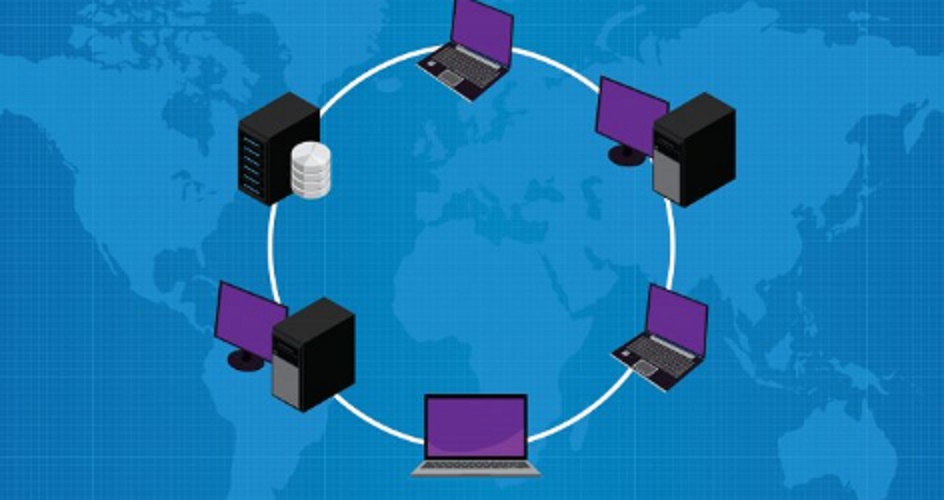What is a network?
We explain what is a network? and what are the types and network protocol. In addition, OSI model and the different topologies and the elements that compose it.
-
What is a network?
In computer science , network (usually computer network or computer network ) means the interconnection of a certain number of computers (or networks, in turn) by means of wired or wireless devices that, by means of electrical impulses, electromagnetic waves or other means physical, allow them to send and receive information in data packets, share their resources and act as an organized set.
The networks have processes for sending and receiving messages , as well as a series of codes and standards that guarantee their understanding by the computers connected to the network (and not by any other). These communication standards are known as protocols , and the most common of these is currently TCP / IP.
The construction of a network allows to manage an internal communication, share the execution of programs or access to the Internet , and even the administration of peripherals such as printers, scanners, etc. These types of swarm systems currently support many of the processes of administration and information processing today, such as telecommunications networks, the Internet or the various business intranet or various organizations.
The emergence of networks revolutionized the way of understanding computer science and opened a new field within this discipline to meet the needs for improvement, security and operability of computer communication.
What is a network protocol (port)?
A network port is a slot that holds a personal computer . This slot has the ability to insert a network cable with which the device will connect to the router signal .
OSI model
The OSI model is the one who takes care of the management of the ports and establishes them in the header of the segments is the transport layer or layer 4, thus managing the sending and reassembly of each segment sent to the network using the specified port. A port is usually numbered in order to identify the application that uses it. Decide to which program you will deliver the received data. This port assignment allows a machine to simultaneously establish several connections with different machines, since all the segments received have the same address, but they are directed to different ports.
Ports
The port numbers are indicated by a 16- bit (2- byte ) processor word , so there are 65536 ports, numbered from 0 to 65535. Although we can use any of them for any protocol , there is an entity, the IANA , in charge of its assignment, which created three categories:
- Well-known ports: Ports less than 1024 are ports reserved for the operating system and used by “well-known protocols” such as HTTP ( web server ), POP3 / SMTP ( e-mail server ) and Telnet . If we want to use one of these ports we will have to start the service that uses them with administrator permissions .
- Registered ports : Those between 1024 (0400 in hexadecimal) and 49151 (BFFF in hexadecimal) are called “registered” and can be used by any application. There is a public list on the IANA website where you can see which protocol each of them uses.
- Dynamic or private ports : Those between the numbers 49152 (C000 in hexadecimal) and 65535 (FFFF in hexadecimal) are called dynamic or private, they are normally assigned dynamically to client applications when the connection is started. They are used in peer to peer (P2P) connections.
-
Types of network

The networks are classified according to their dimensions in:
- LAN . Local A rea Network (in English: “Local Area Network”). They are smaller networks, like the ones we can install in our department.
- MAN . Metropolitan A rea Network (in English: “Metropolitan Area Network”). These are medium-sized networks, optimal for a university campus or a multi-storey library or business building, even for a portion of a city.
- WAN . Wide A rea Network (in English: “Wide Area Network”). This is where networks of larger size and scope come in, such as global networks or the Internet.
Networks can also be classified according to the physical method they use for the connection, as follows:
- Media guided . Networks that link the machines through physical cable systems: twisted pair, coaxial or fiber optic. It has the advantage of being faster, not having so much noise, but being less comfortable and practical.
- Unguided media networks . Networks that establish the connection through dispersed systems and area scope: radio waves, infrared or microwave signals, such as satellite systems and Wi-Fi . They are a little slower but much more comfortable and practical.
-
What is network topology?
There are three models of topology or ordering of a network:
- Network bus . Also called linear, they have a server at the head of a successive line of clients , and they have a single communication channel called bus or backbone .
- Networks and n star . Each computer has a direct connection to the server, which is in the middle of all. Any communication between clients must first pass through the server.
- In ring . Also called circular, connect the clients and the server in a circular circuit, although the server maintains its hierarchy over the system.
-
Elements of a network

The following elements are required to install a computer network:
- Hardware . Devices and machines that allow the establishment of communication, such as network cards, modems and routers, or repeater antennas if they are wireless.
- Software . Programs required to manage the hardware communications, as is the Operating System Network (acronym NOS: Network Operating System ), and communication protocols such as TCP / IP.
- Servers and clients . The servers process the data flow of the network, according to the requests of the other computers in the network called clients or workstations. These allow users to access information individually, sharing resources managed by the server.
- Transmission media . This refers to the wiring or electromagnetic waves that, as the case may be, serve as a means of communicating the message.





